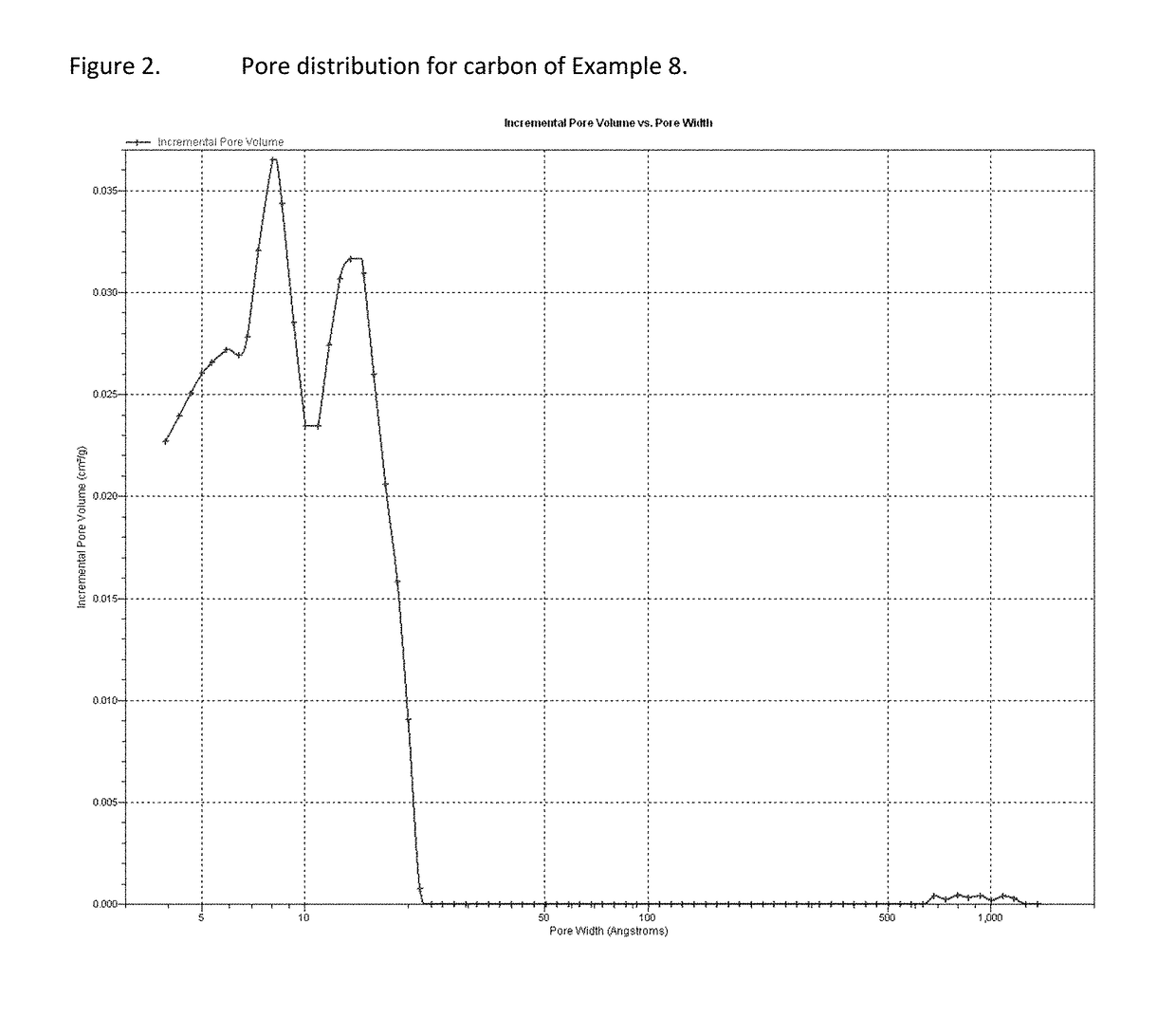Carbon-based compositions with highly efficient volumetric gas sorption
a technology of volumetric gas sorption and carbon-based compositions, which is applied in the field of materials, can solve the problems of increasing associated price, environmental issues, and continuing to exert pressure on an already stretched world energy infrastructure, and achieves the effects of high volumetric gas sorption efficiency
- Summary
- Abstract
- Description
- Claims
- Application Information
AI Technical Summary
Benefits of technology
Problems solved by technology
Method used
Image
Examples
example 1
to Measure Methane Adsorption
[0246]The apparatus to measure methane adsorption of carbon materials is depicted in FIG. 1. The sample chamber is attached via a valve to the dosing manifold affixed with high pressure transducer and a capacitance manometer in-line for pressure measurement. The dosing manifold allows access to the methane supply, vacuum, and vent, as shown.
example 2.example
Example 2. Example of Preparing Carbon Material for Gas Adsorption Measurement
[0247]For methane adsorption measurement, carbon particles were produced, and the carbon particles were subsequently compressed (using 4-8 Nm torque) into a threaded cylindrical mold to form a pellet.
[0248]Carbon particles were prepared by a number of different methods, as described above in the Specifications, for example by jet milling or by mechanical milling in a Fritsch-type mill. Where desired, particle size fractions were created by further sieving. Composite carbon particle samples were then created by mechanical mixing of the various desired input carbon particle fractions.
example 3
gy for Gas Adsorption Measurement
[0249]For gas adsorption analysis, samples (prepared as described in Example 2) were placed into the sample chamber (of the apparatus as described in Example 1). Next, the sample chamber was evacuated, and the sample was heated to about 200 C and held under vacuum for at least six hours. The sample was then allowed to cool to reach room temperature before analyzing. For analysis, the sample chamber was dosed with sequentially increasing levels of methane gas. At each level, the sample was allowed to equilibrate with the dosed level of methane—as determined by no more than 0.001 mA reading off the capacitance manometer pressure gauge over 30 seconds (corresponding to about 0.06 psi). Using these data, gravimetric methane uptake and V / V were calculated as described above.
PUM
| Property | Measurement | Unit |
|---|---|---|
| pressure | aaaaa | aaaaa |
| volume average particle size Dv,50 | aaaaa | aaaaa |
| volume average particle size Dv,50 | aaaaa | aaaaa |
Abstract
Description
Claims
Application Information
 Login to View More
Login to View More - R&D
- Intellectual Property
- Life Sciences
- Materials
- Tech Scout
- Unparalleled Data Quality
- Higher Quality Content
- 60% Fewer Hallucinations
Browse by: Latest US Patents, China's latest patents, Technical Efficacy Thesaurus, Application Domain, Technology Topic, Popular Technical Reports.
© 2025 PatSnap. All rights reserved.Legal|Privacy policy|Modern Slavery Act Transparency Statement|Sitemap|About US| Contact US: help@patsnap.com



